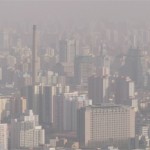Another way to measure air pollution across geographic locations is remote sensing through satellite imaging. The advantage of remote sensing is its broad geographic coverage, including remote areas without dedicated pollution monitors; however, maps covering geographic areas are large (typically 10×10 km grids), which reduce the resolution of geocoding individuals living in these areas.
Evidence for an Association Between Air Pollution Exposure & the Development of Rheumatic Diseases
Rheumatoid Arthritis
In the prospective Nurses’ Health Study, after adjustment for multiple confounders, there was no evidence for an increased risk of RA by exposure to NO2 (HR 0.92, 95%CI 0.85–1.00), SO2 (HR 0.99, 95%CI 0.90–1.09), PM2.5 (HR 0.94, 95%CI 0.86–1.04) nor PM10 (HR 0.92, 95%CI 0.85–0.99).22
Two case-control studies have also been reported. A study using an administrative health dataset from Canada also failed to show an association between air pollution and RA development and in fact, had indication of a protective effect from exposure. The respective odds ratios (ORs) for incident RA and pollutants after adjustment for age, sex and neighborhood socioeconomic status were: NO2 (OR 0.90, 95%CI 0.85–0.96), PM2.5 (OR 0.92, 95%CI 0.87–0.98), PM10 (OR 0.91, 95%CI 0.86–0.96) and SO2 (OR 0.88, 95%CI 0.82–0.93).23
The inverse association is puzzling and potentially points to methodological issues in identifying patients from administrative data and assigning exposures.
This study also assessed risk relative to exposures for nitrous oxide (NO), black carbon, ozone and CO, with all ORs below 1.00—except for ozone (OR 1.07, 95%CI 0.98–1.16).
In the Swedish Epidemiological Investigation of Rheumatoid Arthritis (EIRA) study, no definite association was detected between incident RA and NO2 (OR 0.98, 95%CI 0.90–1.07), SO2 (OR 1.01, 95%CI 0.93–1.09) nor PM10 (OR 0.96, 95%CI 0.88–1.04), when correcting for age, sex, smoking status and education.24
Juvenile Idiopathic Arthritis
Increased concentrations of PM2.5 related to stagnant air conditions in a population from Utah was associated with an elevated relative risk (RR) of JIA onset in preschool aged children (RR 1.60, 95%CI 1.00–2.54), but not older children.25 In a subsequent abstract by the same author, using a metropolitan North American cohort consisting of residents from Boston, Philadelphia, Atlanta, Cincinnati and Toronto, no significant association between PM2.5 exposure and a risk of systemic JIA onset was found, although when pooled with the cases from Utah, the significant association for younger children was again demonstrated (RR 1.76, 95%CI 1.07–2.89 per 10 µg/m3 increase in the three-day lagged moving average of PM2.5).26
Of interest, is retrospective research from São Paolo, Brazil. A case-control study comprising mothers of 21 JIA and 40 control subjects, matched by age and sex, completed a questionnaire that assessed demographic data and environmental inhalation exposure during pregnancy, and estimated daily concentrations of PM10, SO2, NO2, ozone and CO in the pre-gestational and gestational periods. Intriguing was that although they found smoking to have a significant effect on increasing JIA incidence, as might be expected, they also found that exposure to long-distance industrial activities or gas stations could, in fact, be a protective factor.27


